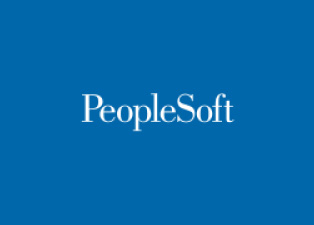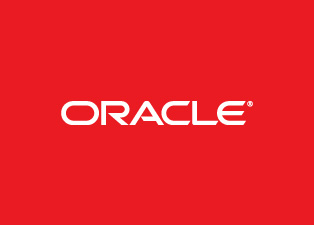Java Online Training
Java Online Training

Java Online Training Course Content :
Java Programing – Core Java
- What is Java?
- Simple Java Program
- Compiling and Interpreting Applications
- The JDK Directory Structure
- Datatypes (Primitive and Non-Primitive) and Variables
- Literals ( Numeric, Char, String)
- Arrays
- Non-Primitive Datatypes
- The Dot Operator
- Operators and Expressions
- Operator Precedence
- Implicit Type Conversions
- The Cast Operator
- Control Flow Statements
- Loops
- The continue Statement
- The break Statement
- Methods
- Object-Oriented Programming
- Classes and Objects
- Fields and Methods
- Encapsulation
- Access Control
- Inheritance
- Polymorphism
- Best Practices
- Objects and Classes
- Defining a Class
- Creating an Object
- Instance Data and Class Data
- Methods
- Constructors
- Access Modifiers
- Encapsulation
- Using Java Objects
- Printing to the Console
- printf Format Strings
JSP
- Introduction
- Overview of Java language and architecture
- Java servlet architecture
- How JSP simplifies the creation of servlets
- Introducing servlets
- How the Servlet API fits into Java EE
- Servlet lifecycle
- Obtaining configuration information
- Deploying servlets
- Overview of servlet containers
- Types of servlet containers available
- Deciding whether to select a basic servlet container versus a full-featured Java EE container
- Tomcat as a popular, stable reference platform for servlets and JSP
- The javax.servlet and javax.servlet.http packages
- The HttpServlet class and how it extends GenericServlet
- The HttpServletRequest interface and how it gives access to data received from the browser
- The HttpServletResponse interface and how it is used to issue a response to the server
- JSP Architecture
- JSP Containers
- Servlet Architecture
- Page Translation
- Types of JSP Content
- Directives
- Content Type
- Buffering
- Scripting Elements
- JSP Expressions
- Standard Actions
- Custom Actions and JSTL
- Objects and Scopes
- Implicit Objects
- JSP Lifecycle
- Scripting Elements
- Translation of Template Content
- Scriptlets
Struts
- Struts Architecture
- MVC and Model 2
- Command Pattern
- Jakarta Struts
- More XML, Less Java!
- Action Mappings
- JavaBeans in Struts
- Working with Forms
- Validation
- Presentation Technology
- Tiles
- Action Mappings
- Command Pattern for Web Applications
- ActionServlet
- Action and ActionMapping
- Struts Configuration
- Selecting a Forward
- Global Forwards
- Declarative Exception Handling
- Global Exception Handlers
- Forms
- Working with HTML Forms
- Action Forms a/k/a Form Beans
- Relationship to Input
- Relationship to Actions
- Relationship to the Model
- Relationship to Output
- DynaActionForm and Map-Backed Forms
- Validation
- Coarse-Grained Form Beans
- Struts Tag Libraries
- Building View Components
- Struts Tag Libraries
- Attributes and Struts Expressions
- Building Forms
- <html:form>
- <html:text> et. al.
- Forms and Form Beans
- Scope and Duration of Form Data
- Managing Hyperlinks
- Error Messages
- Logic Tags
- The JSP Standard Tag Library
- JSTL Overview
- JSP Expression Language
- Core Tags
- Formatting Tags
- XML Tags
- SQL Tags
- Mixing JSTL, EL, Scripts and Actions
- Indexed Properties and Struts HTML Forms
- Internationalization and Localization
- i18n in Java
HTML
- HTML Basics
- Format Text, Ordered Lists, Unordered Lists, Links, Graphics
- Layout and Navigation
- Tables, Frames, Navigation bars
- Interactivity through forms
- Advanced Layout-Hover, rollover effects etc..
JDBC
- Re-Introducing JDBC
- Review of JDBC architecture
- Review of JDBC driver types
- Discussion of evolution of JDBC from version 1.0 through 2.0 and 3.0
- Database concepts review
- Relational database terminology
- SELECT, INSERT, UPDATE, and DELETE statements
- Transactions, logging, isolation, and concurrency
- Key JDBC classes and the java.sql package
- DriverManager and DataSource
- Connection
- Statement, PreparedStatement, and CallableStatement
- ResultSet
- Extra features supported by the javax.sql package
- Rowsets
- Application development activities using the basic JDBC concepts
- Building an interface for selecting records
- Building a data-drilldown example
- Building interfaces for inserting, updating, and deleting records
- Connecting to databases
- Selecting and installing a database driver
- Connecting to the database via a network address
- Connecting to the database based on information supplied by JNDI (the Java Naming and Directory Interface)
- Using the java.sql.DataSource class
- Increasing performance with connection pooling
- Opening and closing the connection
- Handling ClassNotFoundException and SQLException
- Working with a database connection
- Controlling transaction behavior
- Using getWarning and clearWarnings to retrieve, respond to, and clear warnings
- Creating statements, prepared statements, and callable statements
- Retrieving and using database metadata
- Ad-Hoc SQL queries with Statement and PreparedStatement
- Creating a Statement object
- Executing a SQL statement
- Using executeQuery() for statements that return a ResultSet
JAXB
- Manual Options: SAAJ and JAXP
- Portable Web-Services Metadata
- Service Registries: JAXR
- The Simple Object Access Protocol (SOAP)
- Messaging Model
- Namespaces
- SOAP over HTTP
- The SOAP Envelope
- The Message Header
- The Message Body
- SOAP Faults
- Attachments
- The Java API for XML Binding
- The Need for Data Binding
- XML Schema
- Two Paths
- JAXB Compilation
- Mapping Schema Types to Java
- Java-to-XML Mapping Using Annotations
- Marshaling and Unmarshaling
- Working with JAXB Object Models
- In-Memory Validation
- Web Services Description Language
Java Web Services
- Overview
- Why Web Services?
- Service-Oriented Architecture
- HTTP and XML
- Simple Object Access Protocol (SOAP)
- Web Service Description Language (WSDL)
- Universal Description, Discovery and Integration (UDDI)
- The WS-I Basic Profile
- REST
- Web Services for Java EE
- Hosting Web Services: Scenarios
- Invoking Web Services: Scenarios
- Web Services for Java EE (WS4JEE)
- The Automated Approach: JAX-WS and
Drop your query
Most Popular Courses
Achieve your career goal with industry recognised learning paths
What my Client's Say?
-
It was a great course over my expectations. I am eager to have another course wıth you as soon as possıble ~ R. Kamand
-
All in all, it was a very constructive and one in a lifetime experience. I'm so glad that I was part of it.~ T. Engin
-
It was the best decision I had ever made in my life. Although it was expensive for me, but I don't regret even for one second. ~ Maruti Malla
-
Thank you for this great course. I learned a lot of things, I met very nice people and I am happy that I had these 6 crazy weeks with you.".~ Najmul Shar A Baig
-
Very nice and friendly tutor and staff. The course was very fruitful, particularly the input sessions during the first half of it.~ Radha Nandyala
-
It was such great experience, though it was really intensive, it was worth doing it! Cant thank enough all team effort esp Mohan! .~ Rohan Kumar
-
The course was really good because it was a practical course.~ M.Radha patel
-
I liked this experience. Good tutor and nice mates. I will always remember it. ~ Jitu Bavaria











